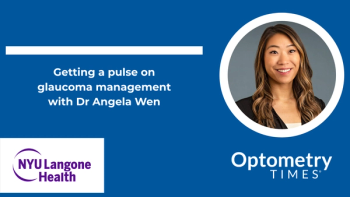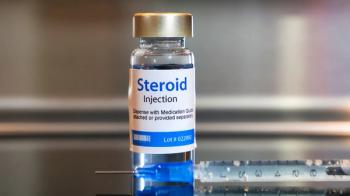
- March digital edition 2022
- Volume 14
- Issue 3
The ideal glaucoma patient, from an optometrist’s perspective
Certain foreign online pharmacies may be scamming this patient base
The ideal patient with
The perfect glaucoma patient
We met in 2008 when I moved back to Augusta, Georgia, and joined my father’s practice. He came in as a new patient because of blur at near vision. His intraocular pressures (IOPs) at that visit were in the low 30s in each eye, and he stated that his sister had glaucoma.
His optic nerve heads were on the large side (which, of course, would make one feel less concerned about large cups), but his cupping was obviously pathological and not purely physiological.
At this point, I informed him that he showed signs of glaucoma and needed treatment to lower his IOPs.
Given how high his pressures were at his initial visit and the obvious optic nerve damage, I gave him a sample of a prostaglandin analogue. I took dilated optic disc photos and asked him to return for more glaucoma-
specific testing in a few weeks.
Follow-up
I scheduled him to see me in the morning, rather than later in the day, for a follow-up visit so that I could observe him at a different time of day.
At this appointment, his IOPs had fallen into the teens in each eye. He reported no issues with the medication, and I was glad to hear his positive response to it.
I determined his central corneal thickness values were thinner than average. His anterior chamber angles were open to his ciliary body in each eye with flat iris approaches and mild pigment in each eye’s trabecular meshwork. His spectral domain optical coherence tomography (OCT) study was remarkable for temporal retinal nerve fiber layer thinning in each eye.
Ganglion cell complex analysis software was not commercially available for my OCT at the time. His visual field study was essentially unremarkable for each eye.
Including his initial visit and every visit since then, he has been an ideal patient. He has been consistently adherent to his medication. He has not shown any frank signs of progression—either structurally, by means of optic nerve assessment and OCT studies, or functionally by means of visual field studies. Additionally, he has consistently demonstrated an approximately 40% reduction in IOPs with monotherapy with a prostaglandin analogue.
Patient curveballs
Well, he did throw a small curveball at me a few weeks ago. He asked about getting his glaucoma medication through a mail-order pharmacy from outside the United States.
He stated that he did not think a prescription was needed or necessary to obtain his medication this online pharmacy. Someone apparently had told him about this alternative in regards to another medication.
I have never had this question come up in my exam room, and I’d never really thought about it.
I had seen advertisements for oral medications to treat a variety of diseases that could be obtained via online pharmacies originating outside the United States. I had just never thought about ophthalmic medications.
My knee-jerk reaction was to tell the patient that reason suggests these medications would carry the same risks as other medications obtained through so-called “rogue” online pharmacies: contamination, incorrect concentrations, incorrect ingredients, inadequate warnings on the bottle or package, etc.
This is, of course, akin to issues the public faces with respect to counterfeit contact lenses, which are often not manufactured in accordance with reasonably stringent regulations.
Conclusion
I advised him to please not get his medication through an online pharmacy from another country that did not require a prescription. I then asked him something I really should be asking my patients more often: “Is your insurance paying for your medication?” As it turns out, his medication was, indeed, covered.
Further research led me to a webpage on the Food and Drug Administration’s website that provides a list of warning letters sent to various online pharmacies in other countries. Unfortunately, several of the letters point to these businesses exploiting the COVID-19 pandemic. A link is provided in the reference below.¹
Reference
1. Internet pharmacy warning letters. FDA. September 2, 2021. Accessed December 7, 2021.
Articles in this issue
over 3 years ago
Keeping calm with positive vibesover 3 years ago
5 diabetes truisms that are (at least partially) falseover 3 years ago
Addressing the need for greater access in vision careover 3 years ago
Tackling the problem of contact lens dropout from presbyopiaalmost 4 years ago
5 reasons optometrists have failed to embrace myopia managementalmost 4 years ago
Contoured prism lenses enhance vision clarity and patient comfortalmost 4 years ago
Restoring sight against all oddsNewsletter
Want more insights like this? Subscribe to Optometry Times and get clinical pearls and practice tips delivered straight to your inbox.













































.png)


